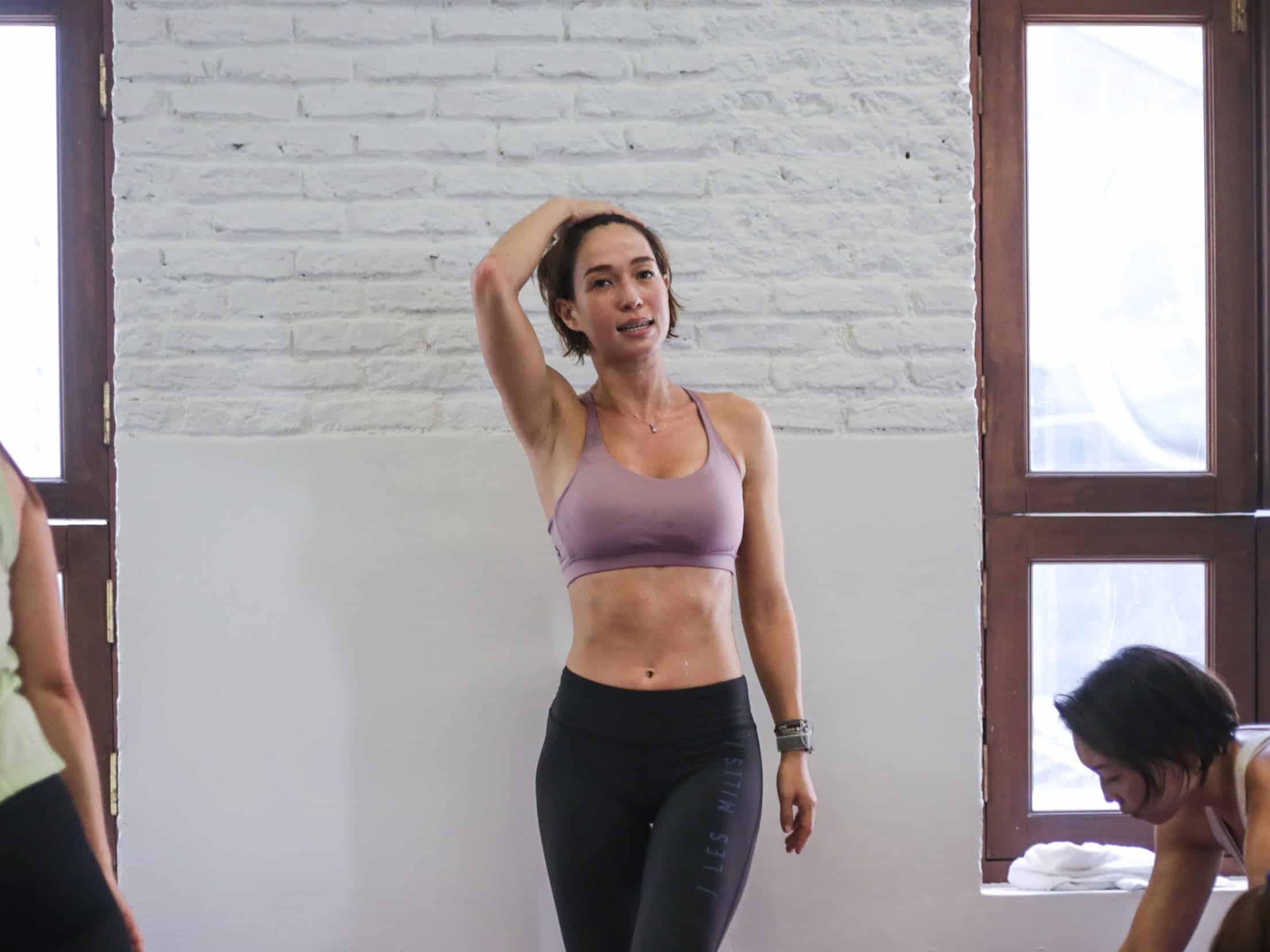



I want to lose fat on my triceps”. “I want a flat tummy”. “My thighs have cellulite, Liv how do I get rid of it”? I get messages like these from women every day and it makes me so sad to hear the negative self-talk in their plights. I founded FitSphere in yoga, adding weight training (the Spheres), and HIIT to become a fit-yoga workout. This allows for a safe at home practice while gaining the benefits of cross-disciplines to target our goals quickly in less time, but you must start and learn for yourself. Here is everything I know about weight loss.
It’s partially true what they say “The only way to lose weight is to eat less, move more”, but this is not all. Have you ever thought about where the weight goes when lost and how it disappears? “Energy”, “sweat”, “burning calories” are the usual answers I get from my students. While this is partially true, it does not mean that you indeed grasp the knowledge of weight loss and how it works. When exercising our heart rate increases which then causes our breath to quicken. During a FitSphere workout, I remind you to breathe in order to move through each movement. The breath is key. If we unconsciously hold our breath, we don’t breathe deeply, or properly we will pass out – I have seen this happen
The heart-pumping movements and weight lifting make your muscles work harder, your body uses more oxygen and produces more carbon dioxide. To cope with this extra demand, your breathing has to increase from about 15 times a minute (12 liters of air) when you are resting, up to about 40–60 times a minute (100 liters of air) during exercise. Your circulation also speeds up to take the oxygen to the muscles so that they can keep moving. As you move more, you breathe more which is the final step in the process of spending energy – exhaling. Breathing out you expel carbon dioxide and water which is the “weight” being lost.
We do also lose water and a small percentage of toxins in our sweat when we exercise, but this is not to be confused with losing weight. Similarly, going to the bathroom is not losing weight, but removing toxins and waste from the body. If you have any further questions on the science behind this please watch Rueben Meerman at Ted x QUT.
I have personally experienced the life-changing capabilities of yoga and brain-changing effects from exercise. The reason I created FitSphere is to promote exercise as a means of taking control of your well-being and not as a weight-loss method. From a PR standpoint, weight-loss is what most customers care about, but if I don’t have a baseline for what health means for myself as an individual a weight-loss marketing approach purely preys on my fears and does not empower me.
The key for my practice is not weight-loss, but if it is yours, it is important to have the right information and not listen to popular sayings, media, and rumblings of fear and common misconceptions that work together to put you in a state of fear to sell you an image of someone who you are not.
For the nerds out there: it takes a 3,500-calorie deficit between calories consumed and calories burned to produce a one-pound drop in body weight. Wow, that is a lot of work and a lot less food for one-pound of weight loss. The problem with counting calories to diet is that the human body isn’t a lab where you can isolate and analyze one factor at a time. While weight gain is caused by excess calories, it’s meaningless unless we are diagnosed as obese. The fact is that all our thoughts, desires, and actions are controlled by hormones and neural circuits. The body is an organic whole and has many reactions to changes in calories, carbohydrates, fats, proteins, metabolism, exercise, and hormones. Even if we would consume more calories, our body will not metabolically adapt to suddenly become obese. Even if a pound or two is gained it would readjust to our natural resting weight when we get back to our usual healthy routine.
See, your body wasn’t made to be skinny, and your body doesn’t care about fitting into size 0 or losing a bit of fat on your arms or butt. All it cares is about keeping you alive, well, and active and it needs fat to do that. Even if you diet every day for the rest of your life your body conspires to lower your daily metabolic rate through a process known as “metabolic adaptation.” As a result, a daily deficit of 500 calories produces slightly less effect on each subsequent day. You may see a temporary weight loss, but as your metabolism adapts the difference grows substantially with longer periods of time, producing just 50 percent of the expected weight loss over 12 months.
Whether or not your life includes carbs, sugar, gluten, meat, cheese, or all those beautifully delicious foods that God created – it’s all the same. As long as we eat real food, not too much, exercise consistently, and breathe, we are going to be alright. Our body will not be in flux and we will live longer, healthier, and happier lives. Let’s do it!

a fitness app with thousands of workouts
Read + ShopGet Liv’s Healthy Lifestyle Updates to your Inbox